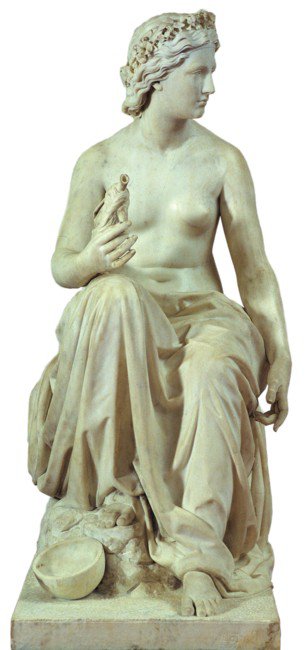Information about the artwork
- Artist/maker
- Lorenzo Bartolini
- Title
- The Spinner
- Date
- 1845
- Materials and Techniques
- Marble
- Dimensions
h 128 cm
- Location
-
Palazzo Pretorio Museum
Third Floor
Our site saves small pieces of text information (cookies) on your device in order to deliver better content and for statistical purposes. You can disable the usage of cookies by changing the settings of your browser. By browsing our website without changing the browser settings you grant us permission to store that information on your device. I agree
h 128 cm

The Spinner is amarble sculpture with its skilful naturalistic expression and perfect craftsmanship is on show in the Lorenzo Bartolini room. The young, semi-naked woman with a serene and melancholy face, seated on a rock, would be an allusion to what is almost a symbol of Prato, its age-old cloth-making tradition and vocation.
Signed by the artist and typical of his late career, The Spinner is a complex work dense in symbols, certainly an allegory by the so-called “artist-philosopher” from Prato. The young semi-naked woman, seated on a rock, has a serene, melancholy face which is not idealised but deliberately impersonal. The refined working of the marble generates a soft play of the light which avoids strong contrasts. The naturalistic rendering of the wavy hair and of the garland of nasturtiums is very skilful, while the statue-like pose is enlivened by the slight twist of the head. The right hand, with the arm in repose, keeps the thread of the spindle in the other hand pulled tight. These elements suggest the representation of one of the Moirai of Greek mythology, Lachesis, who span the thread of fate and established what was to happen to each human being. The composition and creation of this work, which was sculpted with admirable technical perfection under the artist’s control, follow official allegorical schemes which have nothing to do with the criticisms concerning natural beauty which surrounded Bartolini’s later work. There are many possible references to other works of his, such as the Muse of the parties on the base of the Demidov Monument (an alabaster model of which is here in the museum), the Genius of Peace on the Fossombroni monument in Santa Croce, and the 1848 Rest of innocence.
In the room on the third floor, we can admire among other things Bartolini’s plaster model of the Faith in God, the Ocean Nymph known as “Arnina” and the portrait of Mariana Gurieva and a series of busts.